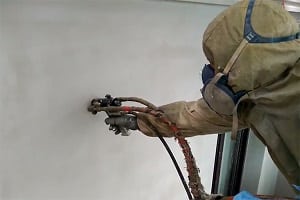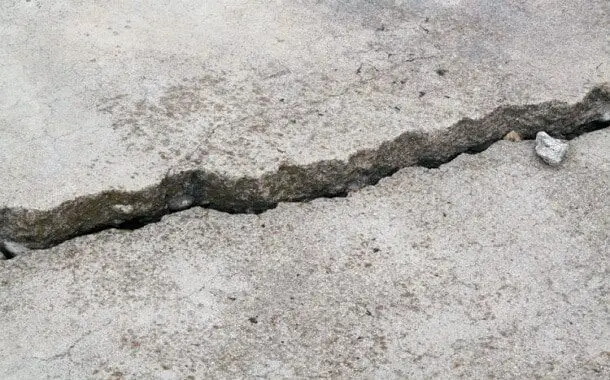Polyurethane Foam Injection Cost
Last Updated on February 21, 2024
Written by CPA Alec Pow | Content Reviewed by ![]() CFA Alexander Popinker
CFA Alexander Popinker
It’s never an easy decision to choose between correcting a damaged concrete slab or replacing it with a new one, but polyurethane foam injection can be the perfect solution. It creates a tight seal that won’t allow water in and will last for years without needing maintenance work like resealing. Not only does this fix offer convenience; Polyurethane Foam Injection provides cost-effective repairs thanks to its ability to raise, level, and lift slabs up from below ground level all while being much quicker and less expensive than slab replacement.
What Is Polyurethane Foam Injection?
Polyurethane foam injection also referred to as foam jacking, is the process of drilling holes into concrete and injecting them with polyurethane. The expanding material fills in voids beneath the surface; this allows for less damage or disruption below the ground level since only a few holes are drilled instead of an entire slab being cut open. This method provides support throughout levels where it’s needed most while still maintaining structural integrity aboveground.
You might also like our articles about the cost of slab leak repair, concrete delivery, or concrete removal.
Once the foam has been injected, it only takes 30 minutes to set up. This quick setup time makes this a favorite for construction crews and developers who are looking for fast results without sacrificing quality or strength. The polyurethane foam does not retain moisture or settle over time; because of these features, this is one of the most durable jacking methods available today.
How Much Will Polyurethane Foam Injections Cost?
Polyurethane foam injection is a necessary step for many building projects and must be done by skilled professionals. Pricing can depend on the material, job complexity, size of the slab to fill in or level off, etc., so it’s difficult to give an exact cost without more information about your specific project. However, we offer this general pricing guide as a rough estimate:
The cost of polyurethane foam injection can range from a few hundred dollars to tens of thousands, but the average price for residential projects is between $2,400 and $3,600.
The costs are generally higher when working on smaller residences – around an affordable rate of about $10-$25 per square foot. Larger commercial properties may require work done on up to 20k sq ft (like supermarkets or schools) which could be as expensive as $8-$20/sqft.
Benefits of Polyurethane Foam Jacking
 Polyurethane foam injection is a clean and efficient way to lift slabs of concrete. The procedure begins with the machinery attaching mechanically to the slab, which prevents loose material from getting into the repair area. When there are no materials being injected, mechanical seals lock up until you’re ready for them again! This entire process can be done in less than an hour – with many crews being able to begin lifting a slab within 10 minutes of arriving at the site and foam setting taking only 30 minutes.
Polyurethane foam injection is a clean and efficient way to lift slabs of concrete. The procedure begins with the machinery attaching mechanically to the slab, which prevents loose material from getting into the repair area. When there are no materials being injected, mechanical seals lock up until you’re ready for them again! This entire process can be done in less than an hour – with many crews being able to begin lifting a slab within 10 minutes of arriving at the site and foam setting taking only 30 minutes.
Polyurethane foam injection is also:
Less disruptive: the process of foaming causes less noise and results in less debris, with all equipment kept within a self-contained box truck. It’s very easy to forget that the team is even working there.
Lightweight and waterproof: Protecting your home from settling – Correctly installing a polyurethane foam slab foundation can reduce the risk of sinking or settlement. The waterproof material will ensure that moisture doesn’t seep into the concrete and lead to structural problems later on in life.
Foam is also light, reducing stress on soil below it so there’s less chance you’ll have any more issues with sinkholes coming up in the future. This lightweight material provides an excellent solution for anyone looking to avoid disaster-prone construction techniques.
Best Uses for Polyurethane Foam Injection
Polyurethane foam jacking is a great way to fix most concrete raising and stabilizing projects, but there are some exceptions.
Don’t forget that polyurethane foam injection has its own pros and cons.
Polyurethane foam is a great way to lift heavy slabs and large slabs alike. Polyurethane foam has the ability to spread under larger areas before expanding, which allows it easily lifts heavier or even larger pieces of concrete with ease. Foam jacking is a technique that uses polyurethane foam injection for slab repair jobs too big for regular pneumatic jackhammers.
Concrete slabs can be at constant risk of settling due to their weight. Polyurethane, on the other hand, is only about 2-6 pounds per cubic foot and has an expansion ability that will not put as much stress on the underlying soil. This means there’s less chance for concrete slabs to settle or sink when using polyurethane foam instead of concrete
Foam injection will help you to preserve the surface of a slab while lifting or leveling it. The foam is injected into small holes, and then concrete can be added in order for your desired slabs’ surfaces to match those around them after they are lifted or leveled.


Leave a Reply
Want to join the discussion?Feel free to contribute!